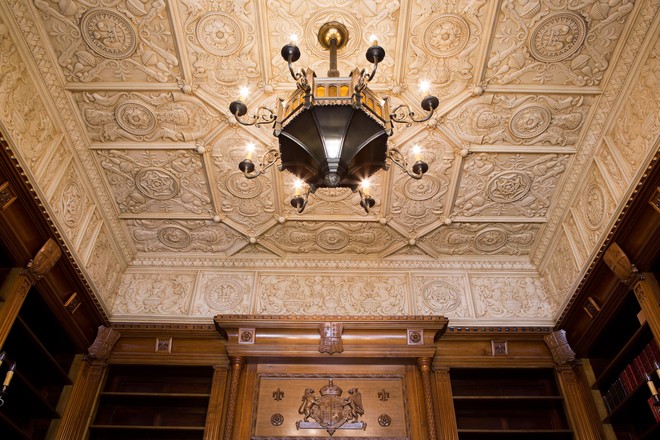
Ceiling in the Shakespeare room
1942
The exquisite plaster ceiling in the Shakespeare room is modelled on the ceiling of Cardinal Wolsey's closet at Hampton Court Palace in England. To construct the ceiling, photographs of the original ceiling were taken and then enlarged to actual size. Closely referencing the full-scale photos, a clay model was made in Art Plasto’s Sydney workshops and from this a mould was cast. Plaster was poured into the mould to produce the series of panels. Moulded ribbings, the most characteristic design feature of Tudor ceilings, hold the individual panels in place. The intricate design of the ceiling and the frieze which continues to the top of the woodwork features Prince of Wales feathers, Tudor roses, rosettes, mermen and mermaids, dolphins, vases and fleurs-de-lis (lilies).
The electrolier (light fitting) was manufactured by Chubb’s Australian Company and donated to the Library by Sir William Dixson, a major benefactor of the Library.


 Back to list
Back to list